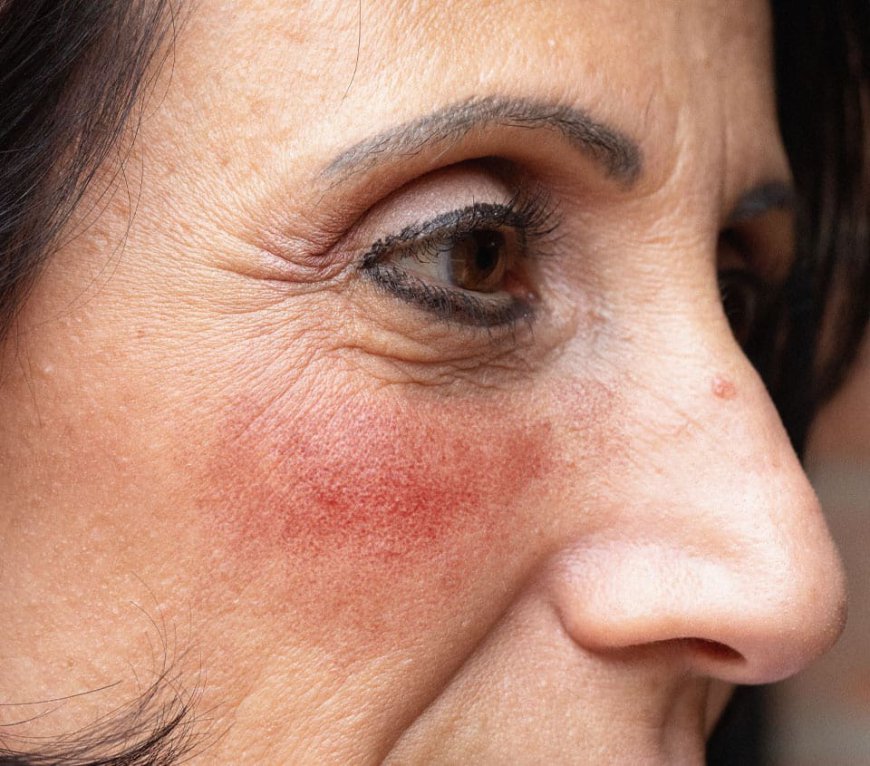Rosacea: Managing Symptoms and Flare-ups

Rosacea is a chronic skin condition that affects millions of people worldwide. Characterized by facial redness, visible blood vessels, and sometimes small, red, pus-filled bumps, rosacea can significantly impact one’s self-esteem and quality of life. Understanding how to manage symptoms and minimize flare-ups is crucial for those living with this condition. This article explores effective strategies for managing Rosacea Treatment in Dubai and navigating daily life with confidence.
Understanding Rosacea
Rosacea typically manifests in various forms, including persistent facial redness, bumps and pimples, visible blood vessels, and thickened skin, particularly on the nose. Although the exact cause of rosacea is not fully understood, factors such as genetics, environmental triggers, and inflammatory responses play a role in its development. Additionally, certain lifestyle choices can exacerbate symptoms, making it essential for individuals with rosacea to identify and avoid their unique triggers.
Identifying Triggers
Managing rosacea starts with recognizing what triggers flare-ups. Common triggers may include:
- Sun Exposure: Ultraviolet (UV) rays can worsen symptoms and cause flare-ups.
- Temperature Extremes: Heat, cold, and humidity can irritate the skin.
- Skincare Products: Harsh or irritating ingredients in cosmetics and skincare can exacerbate symptoms.
- Spicy Foods and Alcohol: Certain foods and beverages can cause flushing and increased redness.
- Stress: Emotional stress can lead to flare-ups in many individuals.
Keeping a symptom diary can be beneficial. Tracking daily activities, food intake, and environmental conditions can help identify patterns and pinpoint specific triggers.
Skincare Routine
Developing a gentle skincare routine is crucial for managing rosacea. Here are some tips for an effective regimen:
1. Choose the Right Cleanser
Opt for a mild, non-irritating cleanser designed for sensitive skin. Avoid foaming or astringent products, as they can strip the skin of its natural oils and worsen symptoms. Look for cream-based cleansers or micellar water to remove impurities without irritation.
2. Moisturize Regularly
Keeping the skin hydrated is essential. A fragrance-free, hypoallergenic moisturizer can help soothe the skin and reduce redness. Ingredients like ceramides, hyaluronic acid, and glycerin are beneficial for maintaining the skin barrier.
3. Sun Protection
Daily sun protection is a must. Use a broad-spectrum sunscreen with an SPF of 30 or higher. Look for physical sunscreens containing zinc oxide or titanium dioxide, as they are less likely to irritate sensitive skin.
4. Avoid Irritating Ingredients
Steer clear of skincare products that contain alcohol, fragrances, or strong exfoliants, as these can irritate rosacea-prone skin. Instead, opt for products formulated specifically for sensitive skin types.
5. Consider Professional Treatments
In some cases, individuals may benefit from treatments such as laser therapy, which can reduce redness and improve the appearance of blood vessels. Discussing options with a dermatologist can provide insight into the most effective treatments for your specific condition.
Lifestyle Modifications
In addition to a proper skincare routine, lifestyle changes can help manage rosacea symptoms:
1. Dietary Adjustments
Keeping a food diary can help identify trigger foods. Many people find that spicy foods, hot beverages, and alcohol can exacerbate their symptoms. Consider incorporating anti-inflammatory foods into your diet, such as fatty fish, leafy greens, and berries, which can help support overall skin health.
2. Stress Management
Stress can be a significant trigger for rosacea flare-ups. Engaging in stress-reducing activities such as yoga, meditation, or deep-breathing exercises can help manage symptoms. Finding hobbies that promote relaxation can also be beneficial.
3. Stay Hydrated
Drinking plenty of water can help maintain skin hydration and overall health. Aim for at least eight glasses of water daily, and consider incorporating herbal teas, which can be soothing and hydrating.
4. Dress Appropriately for Weather
Protecting your skin from harsh weather conditions is essential. In colder climates, wearing a scarf or protective clothing can help shield your face from wind and cold. During hot weather, seek shade and wear a wide-brimmed hat to protect your skin from the sun.
Community Support
Living with rosacea can feel isolating, but it’s essential to know you’re not alone. Many online communities and support groups offer resources, advice, and a platform for sharing experiences. Connecting with others who understand the challenges of living with rosacea can provide valuable emotional support and encouragement.
Seeking Professional Help
If you find that your rosacea symptoms are persistent or worsening, it’s essential to consult a dermatologist. They can provide tailored advice, prescription treatments, and recommendations based on your specific needs. Early intervention can often lead to better management of the condition.
Conclusion
Living with rosacea can be challenging, but understanding how to manage symptoms and identify triggers can lead to a more comfortable and confident life. By adopting a gentle skincare routine, making lifestyle modifications, and seeking support, individuals can effectively navigate their rosacea journey. Remember, while rosacea may be a part of your life, it doesn’t define you. With the right tools and strategies, you can embrace each day with confidence and poise.
